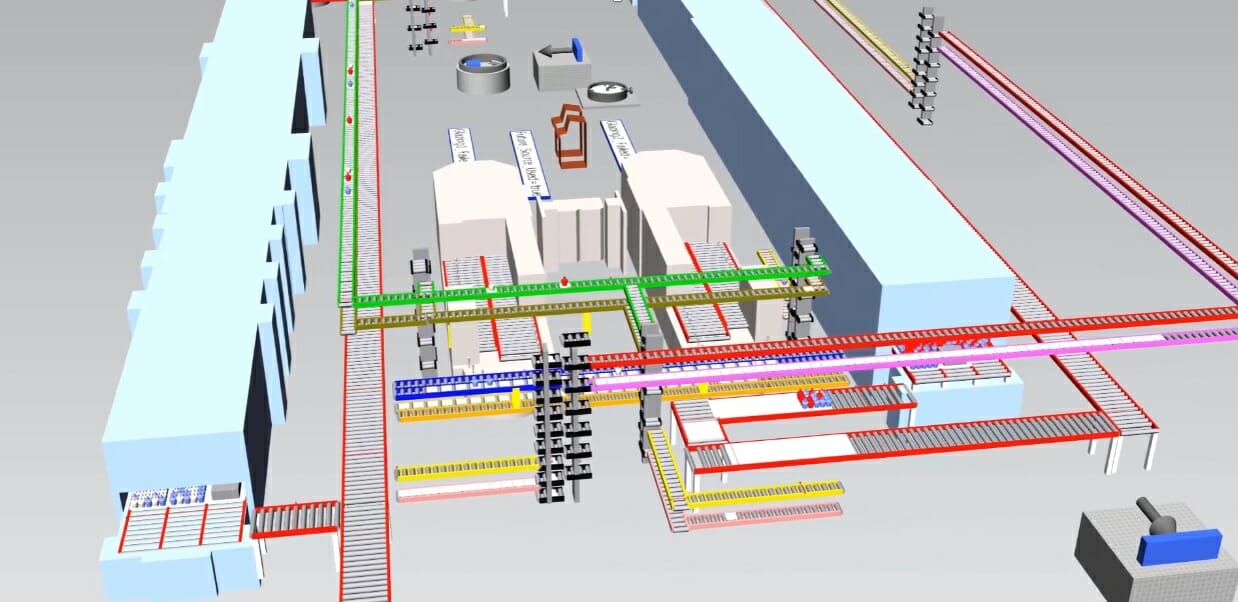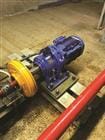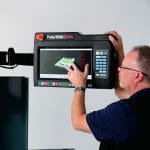Manufacturers continue to face a multitude of challenges including growing competition, cost savings and skills shortages to name but a few. Automation, in its many guises, has proven to be a valuable asset in addressing these issues, however many manufacturers, especially those feeding into a supply chain, remain under constant pressure to further improve productivity and output levels. Investing in additional machinery or automation to meet these demands is of course one option, however there are instances where subtle changes to one or more parts of the existing process can yield valuable additional production capacity. The real challenge here is identifying which areas of the process hold potential for improvement.
In this informative article, Tim Bednall – Sales & Marketing Manager for Wood Automated Systems UK, explains why running discrete event simulation (DES) on existing processes can identify and unlock additional and valuable production capacity.
The vast majority of automated manufacturing systems have been designed to meet detailed technical specifications and production efficiency targets. Once installed, these systems are then fine-tuned to meet these criteria, and for many the prime objective then is to maintain these production and up-time levels. In a growing number of instances however, customers are pressurising their suppliers to increase production levels. The dilemma for the manufacturer is two-fold, it is highly likely that the customer will want to see the increased capacity quickly, and the manufacturer may not have the time or the capital expenditure available to invest in additional equipment.
Tim Bednall comments: “It is in circumstances such as this where discrete event simulation can be used to analyse the existing process step by step and identify where there may be bottlenecks or areas where the current process can be improved. Wood Automation & Control have run many discrete event simulation exercises and have often found that what may have been initially perceived as being the bottleneck restricting output is not actually the case.”
Discrete event simulation models break down the process into a series of different events or smaller operational blocks, which can then be triggered as required. The process is effectively analysed at the lowest levels including the distances that parts travel, where they move to, the speed at which they travel and of course process times.
In one example, a manufacturer was tasked by their customer to increase production from the current level of 30 units per hour to a throughput of 50 units per hour. An initial overview performed in-house by the customer suggested that a specific part transfer operation was restricting the output from the line. However, when a discrete event simulation was run by Wood Automation and Control, it was determined that some subtle changes in timings in various areas of the line would allow the system to achieve the 50 units per hour target. In addition to this the transfer operation initially thought to be the bottleneck by the customer proved to actually have additional capacity following the simulation.

(Following a discrete event simulation by Wood Automation & Control, the capacity of this system was increased from 30 units per hour to 50, with just some subtle changes to event timings)
In another example, the customer was considering linking two consecutive process steps, carried out in separate systems, with a view to having dual systems, each of which performed both processes as a means of increasing throughput.
Tim Bednall expands on this scenario: “We performed a discrete event simulation based upon the current configuration, operational sequences and timings of the existing equipment and then followed that with another simulation this time taking into account the changes proposed by the customer. The outcome of this simulation proved categorically that there would be no benefit deriving from the customers proposed changes. However, further evaluation of the application through the simulation model identified that, even with restricted floorspace, it would be possible to integrate additional equipment which would achieve the increase in output desired.”
Running discrete event simulation on processes or machines makes it possible to predict output and performance over an extended period, such as a year, in just minutes, by running the simulation at enhanced speeds. It is also possible to build in additional factors including mean time between failure (MTF) and mean time to repair (MTR) to provide a holistic view of the complete process over time.
Tim Bednall concludes: “There is little doubt that manufacturers will continue to seek ways to enhance productivity and output levels from their existing automation systems in the most efficient way they can as a means of responding to customer demands and improving profitability for their business. Discrete event simulations are very often used as a relatively quick and cost-effective contribution to a continuous improvement process, which can identify and unlock efficiency savings, quality improvements and additional production capacity.”








